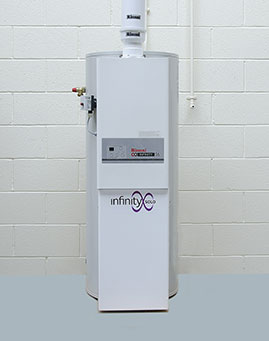We must stop building houses that are simply not covered or prepared for future flood events, warns Know Your Flood Risk’s Mary Dhonau OBE.
With the Environment, Food and Rural Affairs Committee’s (Efra) this week criticising Government for “missing opportunities to act on” Efra’s Future Flood Prevention report that was published in November, Mary Dhonau OBE, chief executive of the Know Your Flood Risk campaign has publicly responded to urge Government to “toughen up on building regulations” so that flood resilient measures are automatically included in all new-build properties that are deemed to be within a flood risk zone.
Following Efra’s formal response on what it calls a “disjointed flood management system”, Mary Dhonau said: “I think it is now a matter of urgency that the Government toughens up on its planning and building regulation processes to make sure that any new builds located in ‘at risk’ areas automatically include measures to make the property flood resilient.
My concern is that Flood Regulation does not cover new build properties and therefore we must stop building houses that are simply not covered or prepared for future flood events; it’s not fair on the future generations who will have to deal with the dreadful aftermath that flood waters bring.”
Landmark Information, the data partner for the Know Your Flood Risk campaign, has undertaken some cross-analysis of flood risk data from the Environment Agency (EA), Natural Resources Wales (NRW) and planning application data from Barbour ABI to determine the percentage of planning applications for new build properties (residential and commercial) that are deemed to be within an EA/NRW Flood Zone 3 (assessing sea or river flooding only), by county.
Between September 2015 and September 2016, 9 out of 10 new build applications in the City of Kingston upon Hull were deemed to be within an EA/NRW Flood Zone 3. This is followed by Thurrock in Essex at 48%, Casnewydd-Newport at 37% and North Somerset at 32%.
Adds Mary Dhonau: “Having reviewed the data analysis from Landmark, it is clear that there are hundreds of applications submitted each year that fall in to a designated flood risk zone according to the Environment Agency and Natural Resources Wales’ parameters. These stats don’t even take into account groundwater or surface water risks and so I fear the volume is greater still. I therefore agree with Efra’s call to Government to create far stronger planning rules, and penalties for those that breach them, to ensure future communities are not blighted by today’s failure to act.”
The Know Your Flood Risk Campaign’s mission is to raise awareness of the risk of flooding from all sources. It is a well-regarded online resource for helping people find out the flood risk related to their current or future home and provides access to free-to-download information guides and a smartphone app.
To download a free copy of the Homeowners’ Guide to Flood Resilience or the new supplement for businesses, visit www.knowyourfloodrisk.co.uk. For more information, follow the Know Your Flood Risk campaign on Twitter. For more information regarding Landmark Information Group, visit www.landmark.co.uk.




